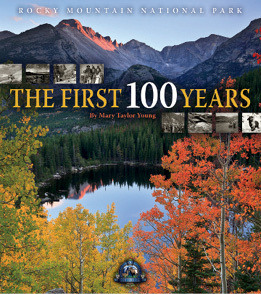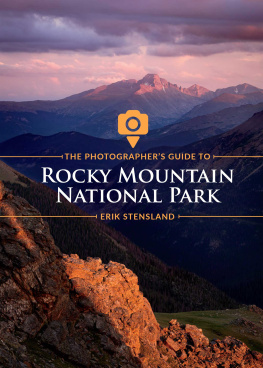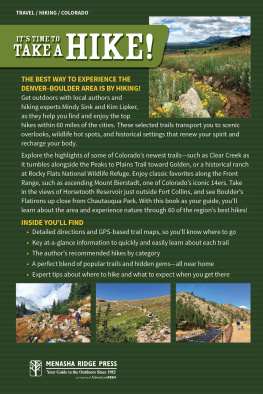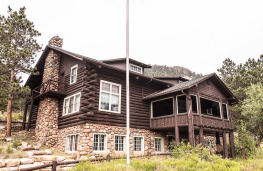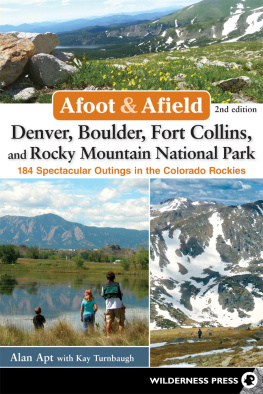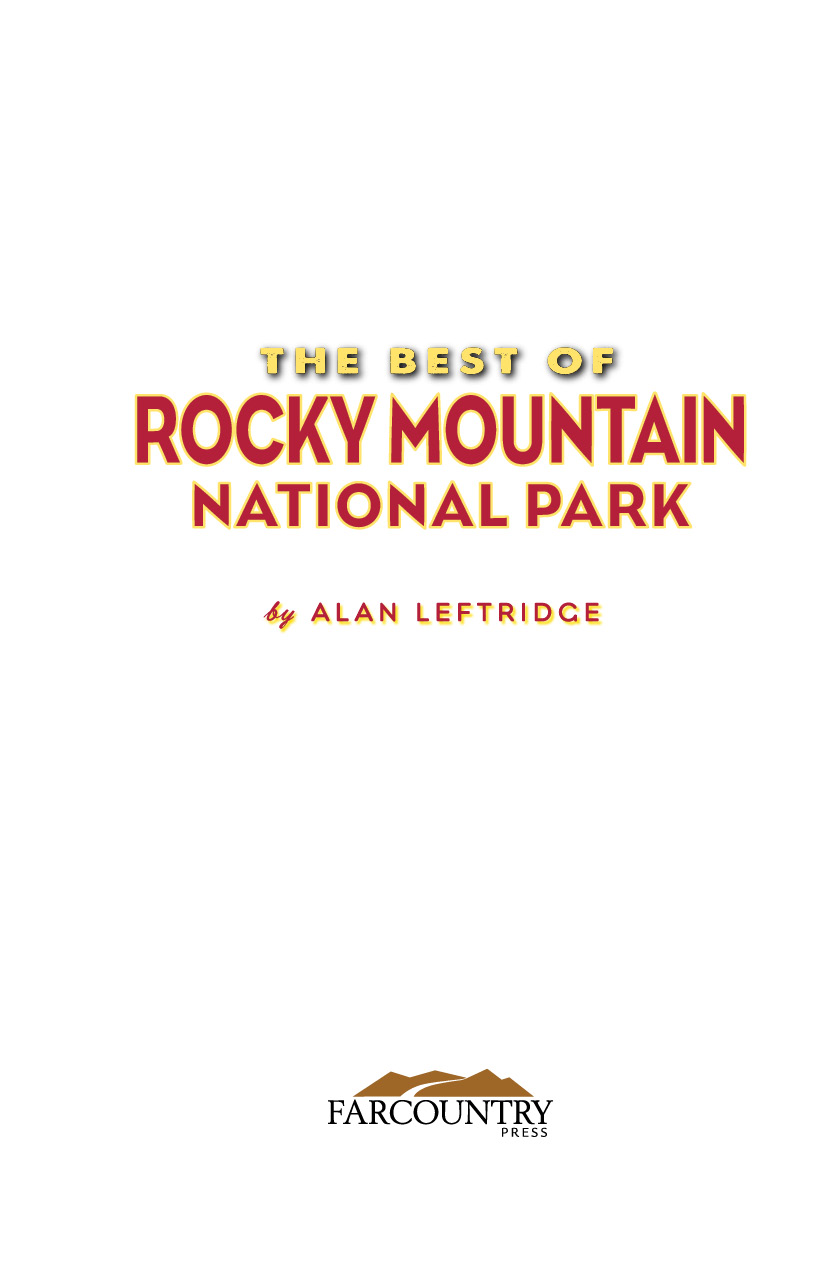You may have already experienced a crisp night atop Trail Ridge Road when the Milky Way seemed close enough to touch, or marveled at the rising sun burnishing Rockys alpine tundra in radiant splendoror maybe shared a barefoot romp across a snowfield in July. Rocky Mountain National Park boasts a high percentage of return visitors. In fact, generations of people have always gathered in the park seeking experiences, building memories, and sharing their stories with family and friends. This is Rocky Mountain National Parks legacy.
Progressive-minded people wanted to preserve this landscape for future generations. Their efforts and your stories will continue to inspire friends and family members to visit and return to encounter the wonders of Rocky Mountain National Parkdiscoveries that will span lifetimes.
Wheres Rocky?
Look at the park map that you received at the entrance station. Notice that the park boundaries are straight lines in some places and zigzag, following mountain ridges, in others. Enos Mills, the father of Rocky Mountain National Park, wanted a 1-million-acre park; Congress approved an area one-fourth that size. The parks borders are concessions to administrative concerns.
Consider the distribution of Rockys fauna and flora. The Colorado columbine blooms throughout the region, not just in the park. In winter, elk are drawn to lower elevations beyond park boundaries. Mountain lions and black bears are found where their habitats provide ample forage and cover, freely wandering between the park and the surrounding national forests. Neither plants nor animals are adapted to boundaries drawn on a map.
So, wheres Rocky? It is at the heart of a greater landscape in the Southern Rocky Mountains. It is politically unbounded by the flora and fauna that live here. The park is a multifaceted, intertwining organization of plants, animals, and humans, connected by the landscape and the streamslife-giving sustenancethat flow east and west from Rockys backbone, the Continental Divide.
What is a Park?
The word park has several meanings. The American Heritage Dictionary lists 10 nuances. How does the word apply here?
Rocky Mountain National Park is an area of land kept in its natural state for public recreational use.
Moraine Park is a broad, flat, open pocket of land in a mountainous region.
Estes Park is a broad, flat, open pocket of land in a mountainous region, and also the name of the town located in that park.
Rocky: Just the Facts
- President Woodrow Wilson signed the legislation that established Rocky as the tenth national park on January 26, 1915.
- The park covers 415 square miles or 265,761 acres.
- The highest point in the park is Longs Peak at 14,259 feet above sea level. The lowest elevation is 7,860 feet.
- The park has more than 60 peaks over 12,000 feet.
- Treeline in the park is at approximately 11,500 feet; more than one-third of the park is above this height.
- There are about 355 miles of hiking trails.
- The park has 147 named lakes and 473 miles of streams.
- Wildlife species includes 66 mammals, 280 birds, 5 amphibians, and 1 reptile (a garter snake).
- The National Park Service estimates more than 1,000 species of flowering plants live in Rocky.
- Rocky Mountain National Park holds the headwaters of the Colorado, Big Thompson, Cache la Poudre, and Fall Rivers.
- Annual visitation exceeds 3 million, with July the busiest month and March the quietest.
- Rocky Mountain National Park is open 24 hours a day, every day of the year (some roads close in winter).
Rockys Weather
What kind of weather should you expect when you come to Rocky? That depends, of course, on the season of your visit. Keep in mind that most of Rocky is a high-elevation alpine park. Winter-like weather can happen year-round!
If you are visiting during summer, be prepared for mild days with temperatures reaching the 80s, and cool nights into the 40s. Afternoon thunderstorms can produce lightning, hail, and high winds. Many of these thunderstorms are convection-type, which build with little notice and produce violent weather. A cloudless morning can turn to an unsettled afternoon with little notice.
You may want to visit during autumn, when the weather is relatively dry, with cool, cloudless days and crisp, starlit nights. Aspen leaves turn to liquid gold, and the bugling of bull elk echoes from the mountainsides. Expect high temperatures in the 50s and nighttime lows in the 30s. Wet snow can begin falling by mid-October, so expect Trail Ridge Road to close, but touring Bear Lake Road can be a highlight of your holiday.
Visitation during winter drops to the annual low, and so do the temperatures. The tundra experiences -35F temperatures with blizzard conditions and deep snowpack in downwind areas. High elevations can pile several feet of snow, while low-lying valleys may accumulate only a few inches. The park west of the Continental Divide typically receives a lot of snow, while the eastern side of the divide gets less precipitation.

